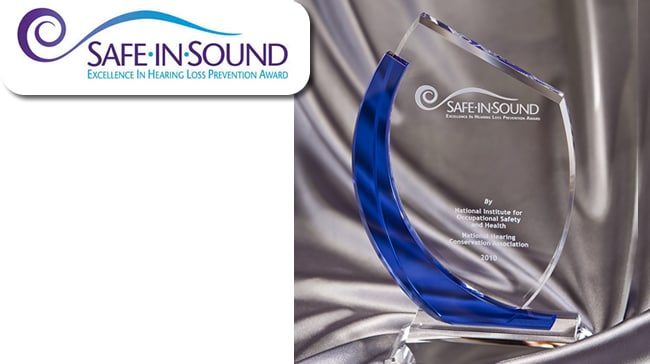NEW ORLEANS–When noise in the workplace makes the news, it’s usually either because OSHA (the Occupational Safety and Health Administration) has charged an employer with violating its noise regulations or workers are suing an employer for causing damage to their hearing. Last week, though, two companies were cited for doing the right thing for their workers’ hearing health.
The National Institute for Occupational Safety and Health (NIOSH) presented its annual Safe-in-Sound Excellence in Hearing Loss Prevention Awards on February 20 during the National Hearing Conservation Association’s 40th Annual Hearing Conservation Conference in New Orleans.
 The winners were United Technologies Corporation (UTC), a global company with over 210,000 employees, and the employees of Mahrt Mill, a paper mill in Cottonton, AL, owned by the MeadWestvaco Corporation.
The winners were United Technologies Corporation (UTC), a global company with over 210,000 employees, and the employees of Mahrt Mill, a paper mill in Cottonton, AL, owned by the MeadWestvaco Corporation.
UTC, which is based in Hartford, CT, became only the second entire company to receive a Safe-in-Sound Award. It was recognized for (1) setting as a companywide goal to “reduce employee exposure to noise and chemicals to levels so safe that wearing personal protective equipment is no longer mandatory” and (2) for developing strategies to fulfill that goal.
The company’s actions included reducing sound levels below an 85-dBA limit for 8-hour noise exposures, adopting inclusive criteria for its comprehensive hearing loss prevention program, completing multiple noise-control studies, and documenting cost and noise-reduction results. According to NIOSH, “employees at all levels of the company are engaged in the initiatives and have contributed to these noteworthy accomplishments.”
EMPLOYEES TOOK CHARGE
The other Safe-in-Sound award praised the initiative of employees at Mahrt Mill for taking steps to make their noisy workplace safer. As NIOSH noted, “The intrinsic nature of the noise hazards at a paper mill approaching its 50th anniversary makes them difficult to control, which translates into challenges and elevates the importance [of] other hearing loss prevention efforts. The subsequent reliance upon hearing protection and effective training becomes even more critical when hazardous noise levels exist.”
In honoring the mill’s employees, NIOSH noted that their Conservation Team implemented educational programs, provided two alternative types of hearing protection fit-testing of all plant personnel, selected effective hearing protection devices for work and recreational use, and conducted audiometric testing with professional review and employee follow-up.
NIOSH also pointed to “evidence of strong support from plant management and individual workers.” The agency concluded, “We commend the employees of Mahrt Mill for changing their course towards hearing health and their efforts to actively encourage the adoption of their strategies by other MeadWestvaco sites.”







